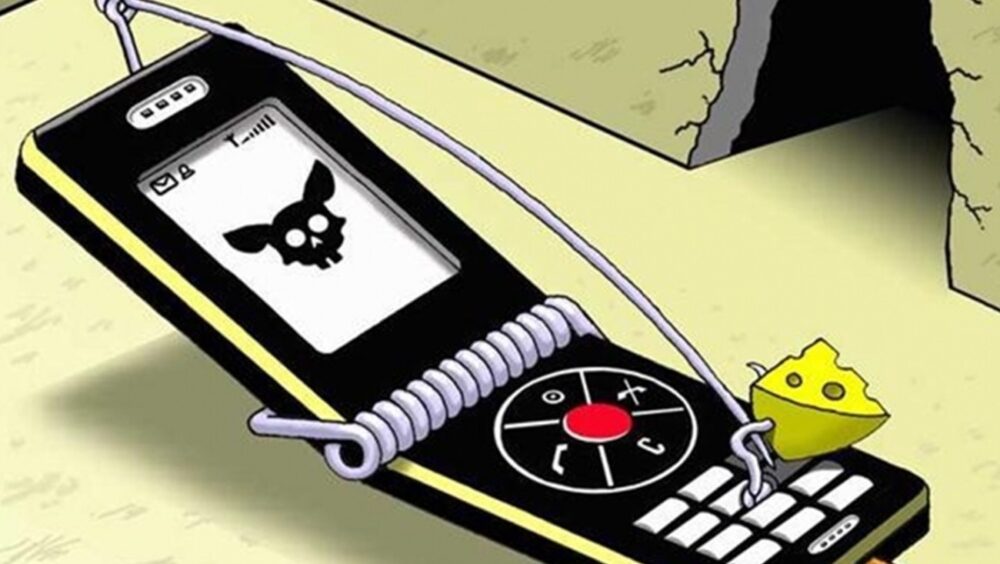The Unprecedented Rise of Phone Scams
Phone scams have reached unprecedented levels in Russia. According to Roskachestvo, in 2019, at least a third of Russians received scam calls, and in the first half of 2020, the total number of crimes related to cards and money transfers increased by 600%. This means not everyone can recognize scam calls and protect themselves. However, there are several ways to minimize these risks.
People with older phone numbers, used for several years, are most affected by scam calls because their numbers have ended up in multiple databases used by scammers. These databases are often expanded because we frequently share our phone numbers to access services or register on websites. It’s no secret that contact databases circulate online and are periodically leaked, so don’t be surprised if an unknown caller claims to be from a bank or a well-known organization and addresses you by name. This doesn’t mean the call is legitimate.
The situation has escalated to the point where every Russian with a phone is at risk. Even if you’re not an easy target and know digital safety rules, frequent calls from unknown numbers can be very annoying.
“Would You Like a Loan?”: The Problem of Spam Calls
Spam calls are a modern-day nuisance. Companies obtain our contact information just as easily as scammers do—either from leaked databases or because we’ve shared our numbers with company representatives. Daily, we receive calls offering loans, “sociological surveys,” promotions from mobile operators, and other services. These calls often come unexpectedly, making it hard to decide if you’re interested in the offer, especially when you’re busy and not expecting a “great loan offer.”
Some people may welcome such calls, but if you want to get rid of spam calls, the following tips are for you.
The key question is: how can you block scammers and sales departments from calling you? You can do this using your phone’s settings, your mobile operator’s services, or special apps.
Protecting Yourself at the Operating System Level
Android
Some Android smartphones have a built-in feature to block calls from unknown numbers. Note that the standard “Do Not Disturb” mode doesn’t always solve the problem, as calls may still ring through. Also, on some Russian-localized phones, there’s confusion between “Block unknown callers,” “Unknown numbers,” or “Unknown,” which may only block calls from hidden numbers, not all unknown numbers.
On Xiaomi phones, blocking unknown numbers is straightforward: go to “Settings,” scroll to “Apps,” select “System Apps” → “Call Settings” → “Antispam” → “Call Blocking.” Then activate “Block calls from strangers” and “Block calls from hidden numbers.”
On Huawei phones, tap the three dots at the bottom right, select “Blocked,” then “Block Rules” → “Call Block Rules,” and choose “All unknown numbers.”
Many phones, such as Samsung Galaxy models, don’t have this feature built-in, so you’ll need to use third-party solutions like caller ID apps, which are discussed below.
iOS
On Apple devices, you can enable “Silence Unknown Callers” to block calls from people not in your contacts and with whom you’ve never communicated. However, if you’ve previously texted or received an email from a number, calls from that number will still come through.
To enable this, go to “Settings,” then “Phone,” and scroll down to activate “Silence Unknown Callers.” Calls from unknown numbers will be silenced, sent to voicemail, and appear in your recent calls list. Apple has also considered emergencies: if you make an emergency call, this feature is automatically disabled for 24 hours so your iPhone can receive any calls.
Protection at the Mobile Operator Level
All major Russian mobile operators—Beeline, Megafon, MTS, and Tele2—offer their own services to limit unwanted contacts. These can be free or paid, such as “Blacklist,” “Antispam,” “SMS Filter,” and the ability to block calls and texts.
Operators also offer caller ID services to help identify calls from hidden numbers (though some operators also offer “Anti-Caller ID” services that bypass these features). Notably, MTS offers a separate app called “MTS Who’s Calling,” which checks numbers against databases of known organizations and scammers to inform you about the likely purpose of the call.
Alternatively, you can install a third-party app on your phone to identify and block scam calls before you even answer.
Protection with Special Apps
Caller ID apps can save you a lot of time and effort by categorizing incoming numbers and showing you the type of call you’re receiving.
There are many caller ID apps available for Russian users on both Android and iOS. The first smart phonebook of this kind was 2GIS Dialer, which is no longer supported, but you can still enable the feature if you have the main 2GIS app installed.
Kaspersky Lab offers its own caller ID app, Kaspersky Who Calls, for both platforms. Since 2019, Yandex has also provided a caller ID app that uses its own database, including user reviews and business directories.
These apps use feedback and machine learning. When you receive a call, the app automatically identifies the type of service being offered—whether it’s a financial offer, a bank call, or just spam. If you answer, the app may ask you to confirm if it was an unwanted call and, if not, to specify the nature of the call to improve its database.
Currently, these apps are quite effective at identifying telemarketing calls from banks and microfinance organizations, as well as robocalls and known scammers.
However, there is a downside: the app developer requests access to your contacts, knows who called you, who you called, and the duration of your calls. Therefore, you should only use well-known, trusted apps with good reviews and high ratings.
Avoid little-known apps with few downloads, as you’re sharing your data with the app, and if the developers are unscrupulous, you could become a victim of a data leak.



